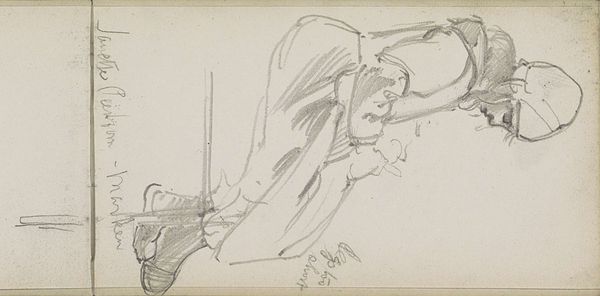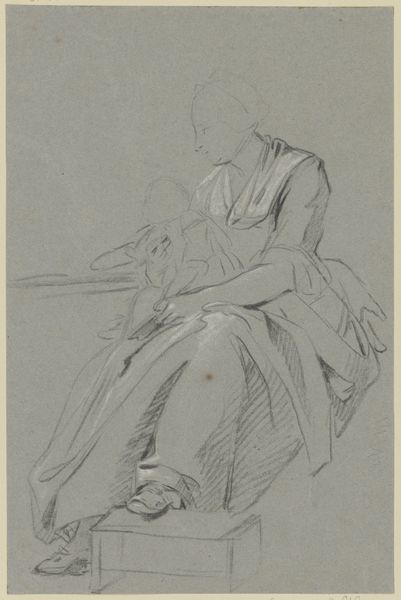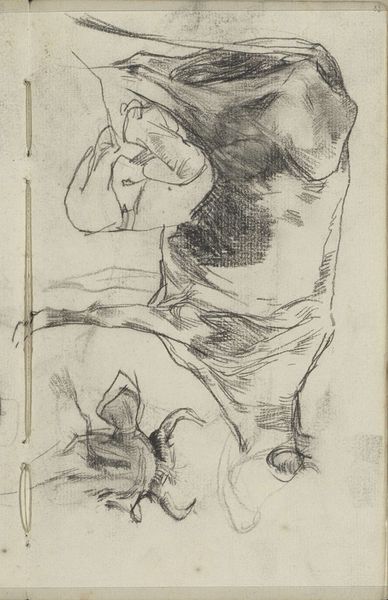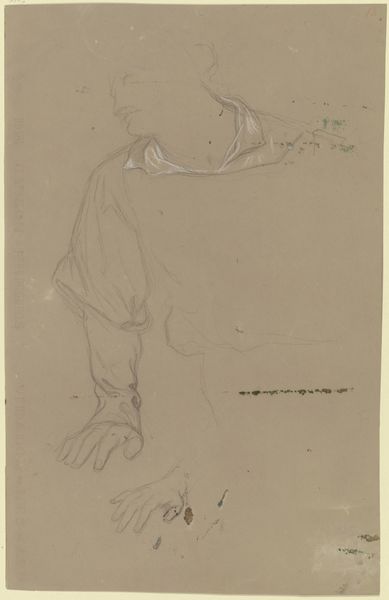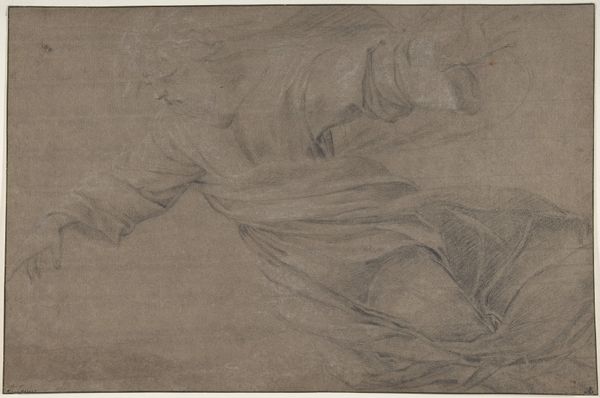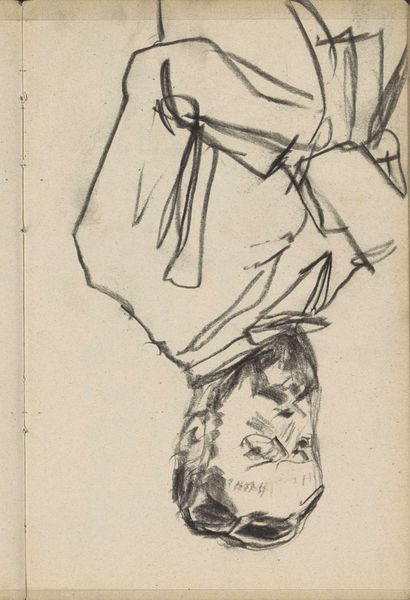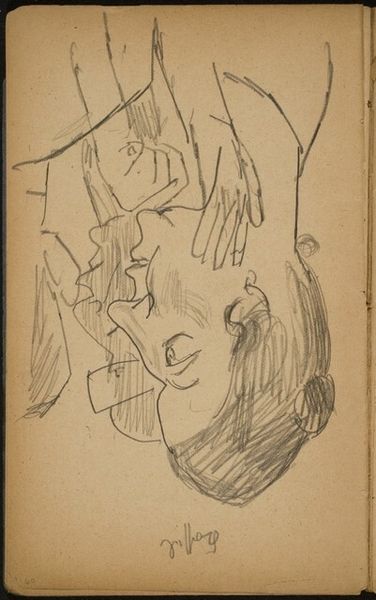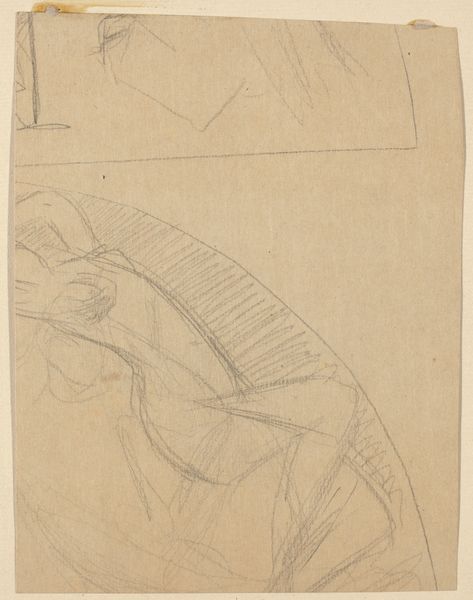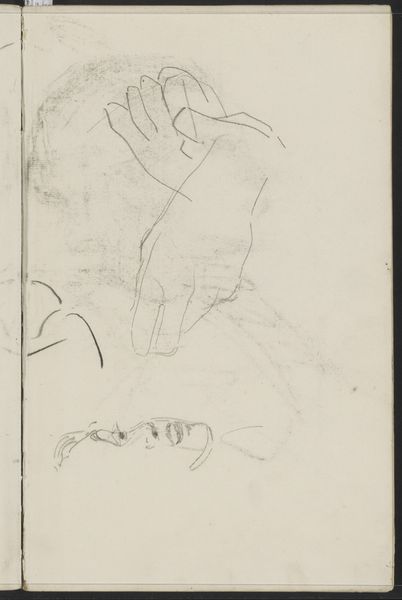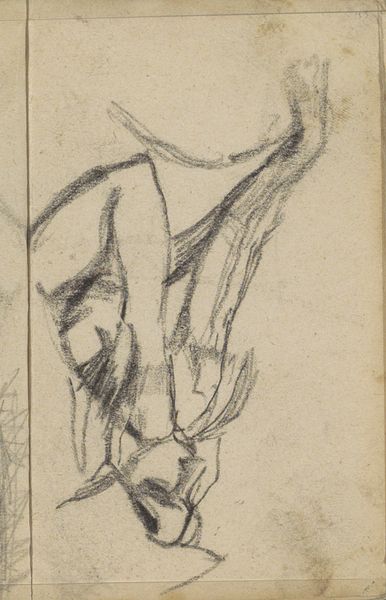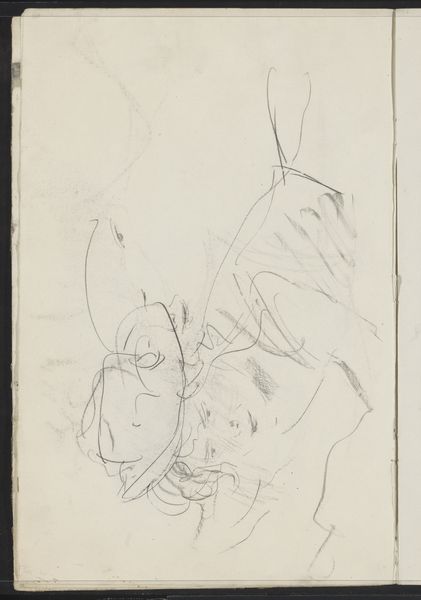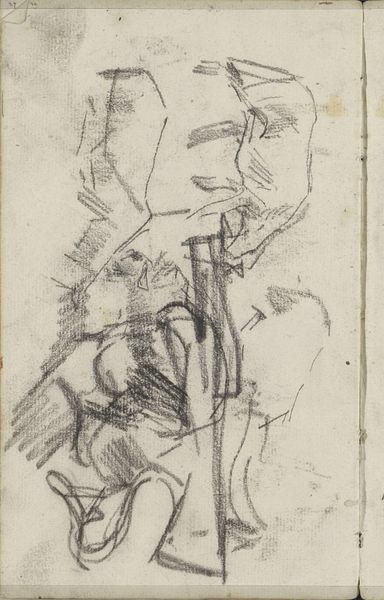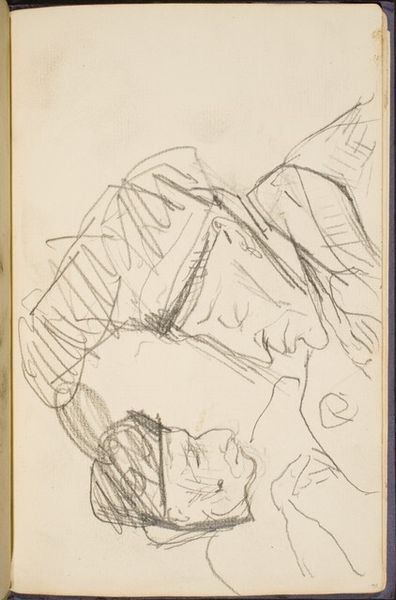
drawing, pencil
#
drawing
#
figuration
#
pencil
#
line
Dimensions: height 326 mm, width 255 mm
Copyright: Rijks Museum: Open Domain
Editor: Here we have Pieter Dupont's pencil drawing, "Studie onderbenen voor Homme de peine," made sometime between 1880 and 1911. It focuses on the lower legs and feet. The fabric seems to be the main subject of the study, as there are plenty of folds represented by dense and very subtle strokes. I wonder what we can gather by focusing on its visual components. What strikes you about it? Curator: The piece compels attention through its study of line. Observe the masterful handling of varied densities. Lightness defines form on the planar surfaces, with layered graphite suggesting depth and weight, particularly where the fabric bunches around the leg. Note how Dupont articulates form purely through tonal variation achieved by line, negating color to expose the structure of the representation. How do you think this relates to the larger figure, of which it is merely a fragment? Editor: Well, without the color, the shapes created by the light and shadow become the subject. Is it about the legs, or the shadows on them? I find myself wanting to focus on individual areas instead of the overall subject. Curator: Precisely. The emphasis shifts from pure representation to a focus on abstract formal qualities. It seems that Dupont privileges the process of seeing and representing over delivering a polished narrative. Are we then dealing with a complete artwork or only part of one? Do preparatory sketches possess their own independent aesthetic merit? Editor: I see your point. I hadn't considered the aesthetic value of something that is a study, but focusing on lines, shapes, tones makes it another thing altogether. This piece reveals that even studies of details can become profound artistic statements by isolating their composition and technique. Curator: Indeed. It highlights how meticulous attention to formal elements elevates a seemingly utilitarian sketch into an object worthy of contemplation in its own right. The detail in the folds draws attention to these individual artistic elements.
Comments
No comments
Be the first to comment and join the conversation on the ultimate creative platform.
